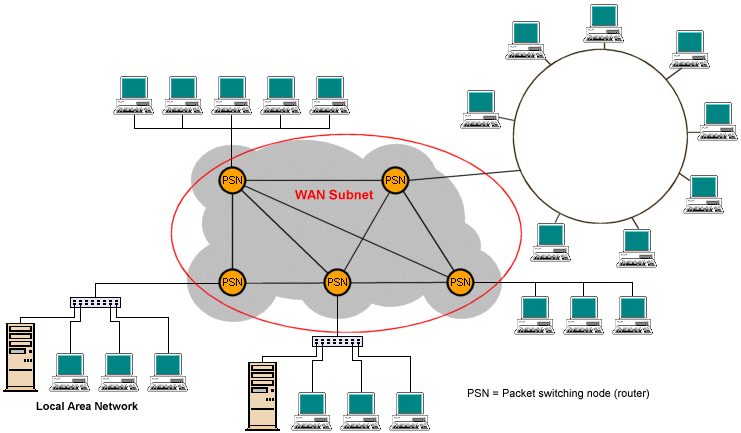Wide Area Networks
A wide area network (WAN) spans a large geographical area. Large organisations may have offices in different cities, different countries or even on different continents, each with its own LAN. The individual LANs are often linked to form a much larger wide area network. Workstations
on WANs are traditionally called hosts, although they are also often referred to as end systems. The networks that make up the WAN are interconnected by a communications subnet.
The subnet consists of transmission lines and switching elements. The switching elements are specialised computers used to interconnect two or more networks. When a data packet arrives on an incoming transmission line, the switching element must select an outgoing transmission line on which to forward it. If the required output line is not immediately available, the packet will be stored until the line becomes free. These switching elements are also known as intermediate systems, and more commonly as routers. If two routers are not directly connected but need to communicate, they must do so indirectly via other routers. The diagram below illustrates the relationship between the subnet and the individual LANs.

LANs in a wide area network (WAN) are connected by a subnet
